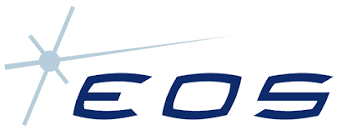
Defence budgets play a significant role in shaping the geopolitical environment and influencing investment in unmanned aerial systems/vehicles (UAS/V) mitigation strategies. As the world transitions from a unipolar to a multipolar state, there is a heightened focus on defence technologies such as drones, leading to increased investment in counter-drone solutions.
This growth in investment is further accelerated by the rising threat of non-state actors. Major defence spenders are increasingly compelled to prepare for potential attacks, prompting initiatives to develop robust counter-unmanned aerial systems (C-UAS) systems capable of countering a range of UAV threats.
According to GlobalData’s counter-drone technologies thematic research, the US remains the largest market for global military UAVs, accounting for 18.9% of the market in 2022, followed by Russia and China, which accounted for 10.0% and 9.2%, respectively.
UAS classifications and budget implications
Groups 1-2 are lightweight, portable, and have limited range and payload capacity. They are typically used for reconnaissance, surveillance, and target acquisition roles. Due to their affordability and low operational costs, these smaller drones are accessible to most nations.
Larger drones, classified as groups 3-5, are more sophisticated and capable of extended operations while carrying significant payloads. These larger drones are used for long-range surveillance, armed reconnaissance, and strike missions. However, the high procurement and operational costs make these advanced drones unattainable for nations with limited defence budgets.
The proliferation of UAS technology has led to increased concerns about their potential use in asymmetric warfare and terrorist activities. The affordability and availability of commercial off-the-shelf drones mean that even non-state actors can pose significant threats. This creates a scenario where expensive defence systems are used to counter relatively inexpensive drones, raising concerns about cost-efficiency and sustainability.
Traditional C-UAS measures, such as missile systems, are often costly and may not be practical for widespread use against numerous small, low-cost drones. This imbalance has driven the need for more innovative and cost-effective solutions to counter UAS threats.
According to the Joint Air Competence Centre, the global C-UAS market is growing rapidly. The number of C-UAS systems or subsystems incorporated into C-UAS systems on the market exponentially increased from approximately 12 in 2015 to 537 in 2019. It is now projected to grow from $1.29bn in 2024 to $7.51bn by 2032, exhibiting a compound annual growth rate (CAGR) of 24.7% during the forecast period.
The Slinger System
Electro Optic Systems (EOS) has emerged as a key player in developing innovative and cost-effective C-UAS solutions. Recognising the need for affordable and efficient countermeasures, EOS has introduced the Slinger counter-drone remote weapon system, which is designed to offer a high probability of neutralising drones with minimal expenditure. It boasts at least a 95% chance of downing a quadcopter with a single 30mm proximity-fused round in standard daylight conditions at a distance of 1,000m. This cost-effective approach addresses the economic challenges of countering inexpensive drones with expensive technology, providing a viable solution for nations with varying defence budgets.
To achieve this accuracy, the Slinger incorporates advanced radar technology, capable of detecting and tracking drones at ranges exceeding 800m. The radar is complemented by electro-optical and infrared (EO/IR) sensors for precise target acquisition and engagement. It is designed for versatile deployment, making it suitable for both urban and battlefield environments. This flexibility is crucial for adapting to different operational needs and terrains.
The system features a state-of-the-art fire control system, capable of automatically tracking targets, allowing the operator to engage at a chosen time. It utilises advanced algorithms for target detection and tracking, ensuring high precision in threat engagements. The system is fully stabilised with a three-axis gimbal and four-axis sensor unit that allows exquisite pointing on the move. The system’s modular design can also be easily integrated with existing platforms, offers rapid battle damage repair, and can accommodate various weapon types, including machine guns, cannons, rockets, and missiles.
Slinger’s innovative approach to counter-drone technology, combining advanced software, precise targeting, and versatile weapon options, sets it apart as a leading solution in the field. Its ability to provide effective and efficient drone defeat capabilities makes it a valuable asset for military and security forces worldwide.
A cost-effective approach to C-UAS
As the global defence landscape continues to evolve, the role of UAS and the growing need for C-UAS will remain critical. Defence budgets will play a pivotal role in determining the extent to which countries can leverage advanced UAS technologies and protect against emerging threats. The increasing issue of using expensive technology to counter cheap drones underscores the importance of investing in innovative and cost-effective solutions.
EOS’s Slinger demonstrates that it is possible to develop effective C-UAS capabilities without incurring prohibitive costs.
To find out more, download the free paper below.


